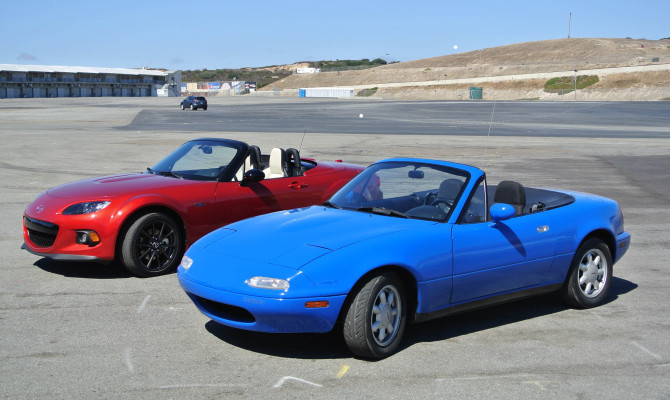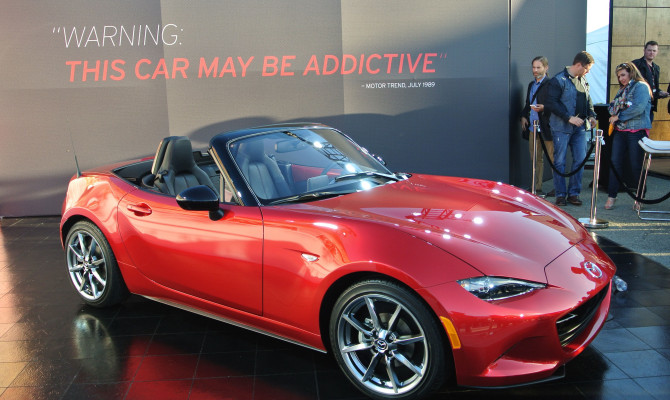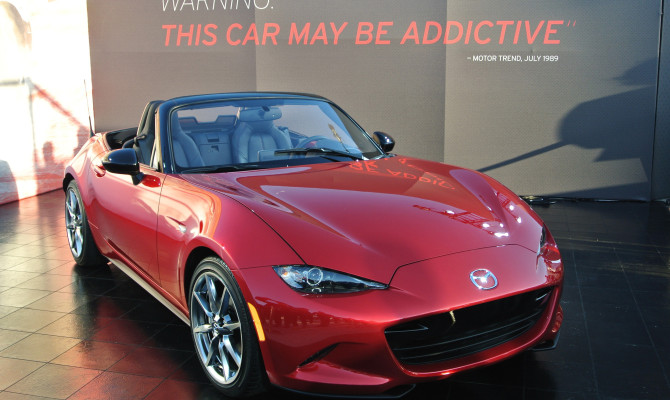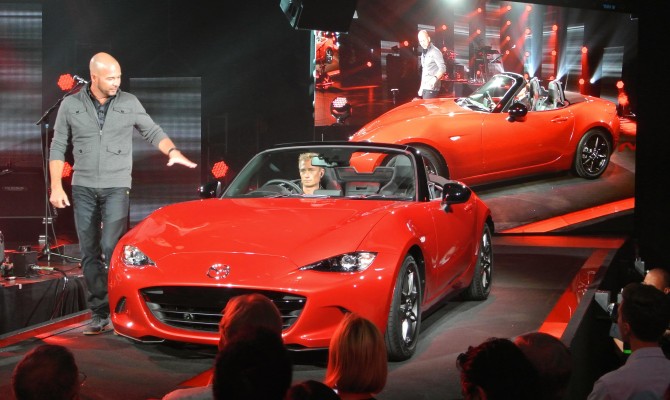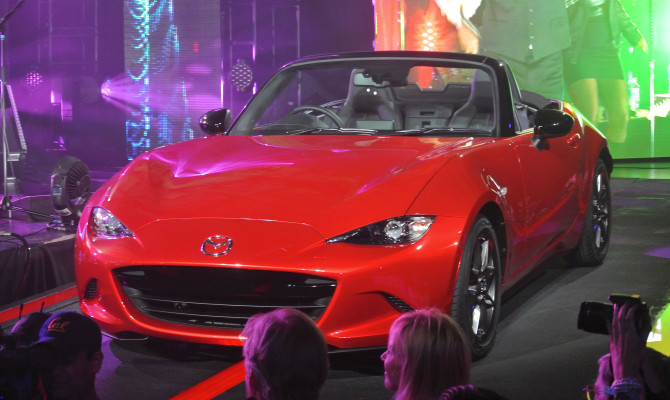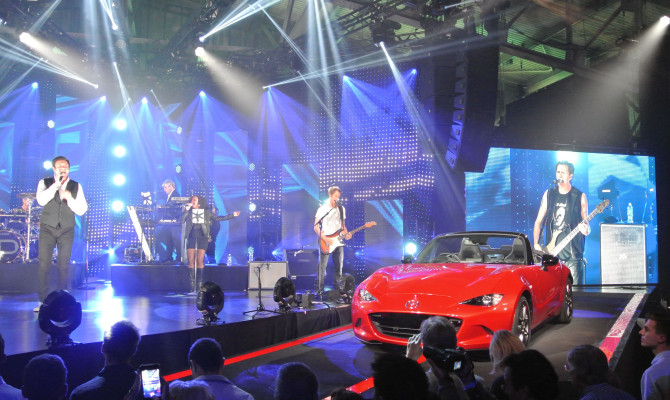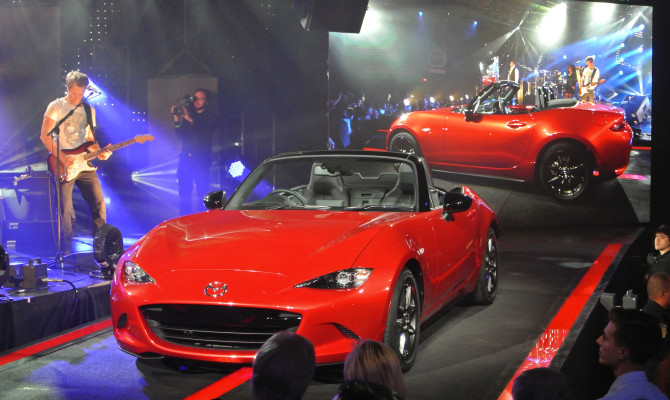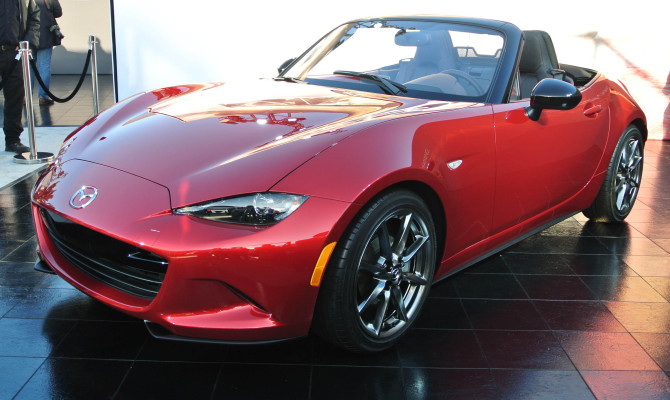“Low mileage first generation Miatas amazingly still trade for under 10 grand in its 25th year; it’s doubtful those prices will hold steady for its 50th.”
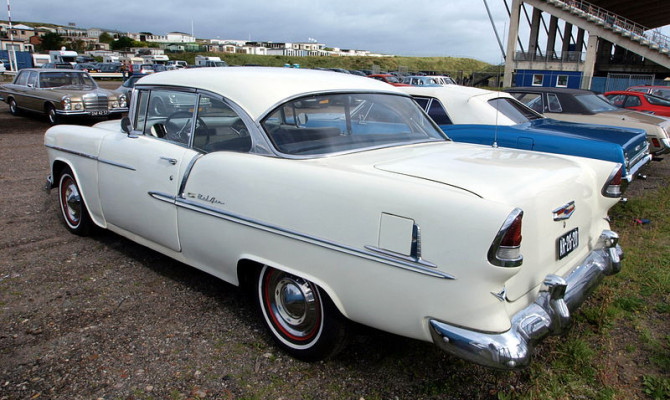
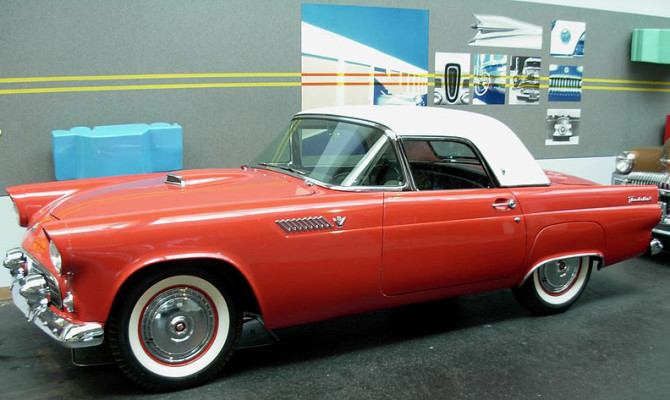
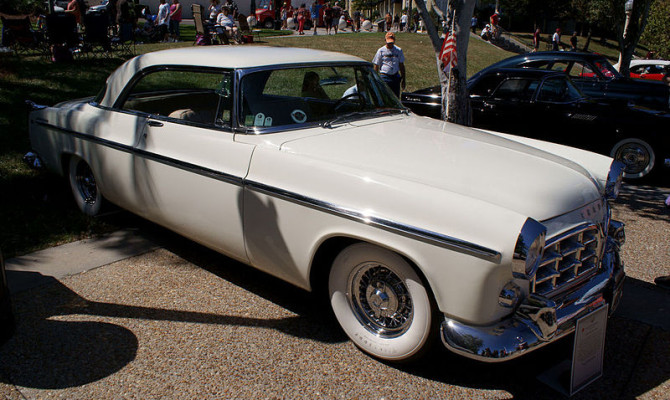
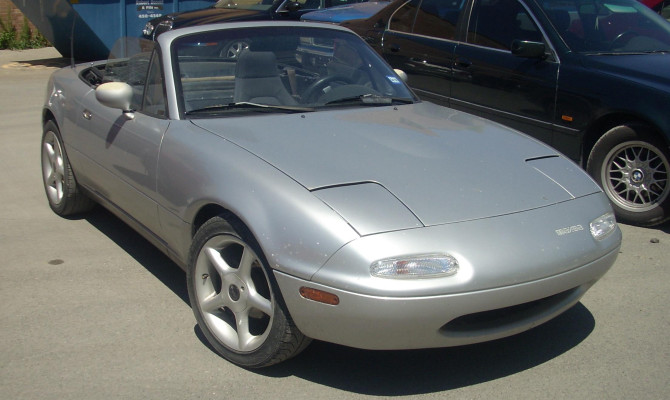
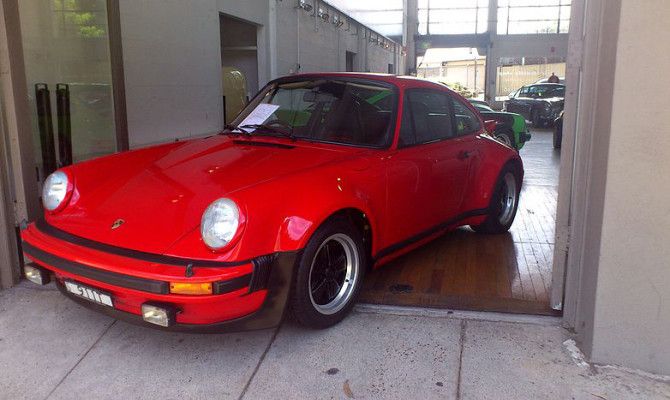
2015 follows 2014 and 2013 as particularly rich years for automotive milestones – here are five automotive anniversaries.
1955 Ford Thunderbird: The Corvette may have been the first post-war American two-seater from one of the Big Three, but it was the Thunderbird that was the most popular. In fact, after a disappointing first two model years, Chevy was considering killing the Corvette until the runaway popularity of the 1955 T-Bird made them reconsider. Made famous in George Lucas’ film, “American Graffiti,” the 1955-57 two-seater “baby birds” remain the most collectible T-Birds. Happy 60th.
1955 Chevrolet Bel Air: The 1955-57 Bel Air is probably the quintessential American collectible car, and it introduced another American milestone — the Chevy small-block V-8. The brainchild of Chevrolet chief engineer Ed Cole, the small block was relatively light, easy to service and expandable — from its original 265 cubic inches up to the ubiquitous 350 and beyond. The Bel Air was just the car to showcase the new overhead-valve V-8.
Mazda Miata: This one makes a lot of us feel old: The Miata is 25. Introduced in late 1989 as a 1990 model, for all intents and purposes, it was a British roadster that wouldn’t leak oil in your garage, or decide not to start below freezing or spontaneously set its dash on fire (not necessarily in that order). Mazda took all the good that we remember from British roadsters (they allegedly dissected several of one of the best, the Lotus Elan) — from sharp handling to a smooth short-throw gearbox — and added five speeds a modern twin-cam engine as well as a beautifully designed manual convertible top. Low mileage first generation Miatas amazingly still trade for under 10 grand in its 25th year; it’s doubtful those prices will hold steady for its 50th.
1955 Chrysler 300: The first of the “letter series” 300s was originally just known as the “300,” although it was succeeded by the 300B, 300C, etc. A gorgeous pillarless coupe that was really only built to go racing in NASCAR, it was powered by a 331-cubic-inch Hemi V-8 and was capable of nearly 130 mph, an amazing figure for the day. Just a few more than 1,700 were built, but it was the inspiration for the sensational sedan introduced by Chrysler in 2005. Happy 60th to the original 300 and happy 10th to the reboot.
1975 Porsche 911 Turbo: The mid-1970s were the dark ages of automotive performance, taking on the moniker “The Malaise Era,” which is known for low compression, emission controls and generally excruciating dullness. The Germans didn’t get that memo and, building on years of racing experience using exhaust-driven turbochargers, Porsche introduced the outlandish 911 Turbo Carrera, otherwise known by the internal project number “930.” Porsche used nearly as crude a setup as the turbo employed by the Corvair a decade earlier, and early 930s were very much an on-off proposition with turbo lag aplenty. But with 0-60 times of around five seconds, the 930 would put most muscle cars to shame. Many owners got caught by surprise by boost coming on while entering a corner — lift off the gas or brake and the rear-engine weight bias plus physics would take care of the rest. A fair number of dentists and pro athletes wrapped 930s around trees. The 40th anniversary has been preceded by a dramatic upswing in 930 prices.
Rob Sass is the vice-president of content for Hagerty Insurance. Hagerty is the world’s leading specialist provider of classic car and boat insurance. Learn more at hagerty.ca.
The Miata/MX5 holds a Guinness Book of World Records title of as most successful two-seat convertible roadster in history…
Monterrey, California.
Looking at the specs, it doesn’t seem too impressive.
A 1.6-litre engine, 116 horsepower, 100 lb-ft of torque, a 0-100 km/h time of less than nine seconds, 14-inch tires. Heck, my bicycle has bigger rubbers! Okay, maybe not.
But 25 years ago, the Mazda Miata was a product of those numbers. It wasn’t necessarily endowed in the engine department.
However, the two-door roadster did have everything else on its side. A sleek design, a peppy personality, a brilliant red coat and something that other cars have strived to achieve in their two-door roadsters over the years but have fallen short – longevity.
At a quarter century old, the Miata/MX-5 has achieved incredible success.
Close to a million of these drop tops have been sold worldwide. The Miata/MX5 holds a Guinness Book of World Records title of as most successful two-seat convertible roadster in history. Not bad for a car that packs in so many thrills for under $30K.
Over the years, the front-engine, rear-wheel drive car continued to encourage the masses to drive topless. Whether through a rag or hardtop, this specimen of automotive manufacturing and design allowed people to feel the proverbial wind in their hair within seconds.
I felt it as a kid as my mom was lucky enough to be one of the first Miata owners in BC when they came out in 1989 – a red one, of course – and took me out for rides frequently.
Those memories have stayed with me over the decades, though I’ve been able to form my own bond with the car.
Not only have we (meaning, the various MX-5s I’ve driven in the last in 11 years) put down thousands of kilometres together, we’ve also been paired up at the Mazda Raceway Laguna Seca for the Skip Barber Racing School experience a couple of times.
Nostalgia is one popular element of its appeal, but there’s an undeniable fun factor. Whether racing it on a track or just taking it to the grocery store, the first turn you carve in it will rope you in like an infomercial in the wee hours of the night when you can’t sleep. But in the case of the MX-5, you won’t have any buyer’s remorse.
Fast-forward through the years and you’re now viewing the fourth generation MX-5.
And what better way to welcome the roadster to the stage here in California than via a little band called Duran Duran. And through a live satellite stream that was broadcast here, and abroad in Spain and Japan.
The reasoning? – Both the English music group and the roadster came into popularity in the 80s and continued to succeed and grow in status over the decades. Besides, “Rio” is an incredibly catchy tune to dance to!
That said the MX-5 has a new, eye-catching look to it. Not many specs have been released though I can tell you this: it’s lower, wider, and sheds 100kg in the making.
It also embodies the KODO or “Soul of Motion” design language.
This two-seater also comes with sexy character lines from its four corners. Furthermore, up front, you’ll notice its headlights that look like they’re eyeing its prey; unlike the first generation’s pop up/down headlights that were more than welcoming.
Like with all-new models of anything legendary, there will be a polarizing reception. Some might think it’s too radical. Some might fall immediately in love with it. And some will wait to drive it to make up their mind.
Regardless of the way it looks – which certainly helps its cause – it’s really about how you feel on the road, behind the wheel, and when you tuck it in at night. More details about the MX-5 are scheduled to be released at this year’s Paris Auto Show.
Either way, I can’t wait to drive it.
Looking into my automotive crystal ball, I see a number of reasonably priced Japanese cars with the potential to go up in value, not down.
And while you wait for their price to rise, these collector cars of the future should give you endless driving pleasure – that is, until you sell! (more…)
Recent Comments
- { Enjoyed your Forest of Bowland in the BMW X5M, particularly the photo of the BMW in front of the main part of Stonyhurst College where... }
- { Bantam designed the Jeep, not Willy's or Ford. The American military gave the original Bantam prototype to Willys and Ford to copy. There is plenty... }
- { All Escalades come with a 6.2-lilter V8 engine that produces 420 horsepower. A six-speed automatic is the only transmission offered and drives the rear wheels.... }
- { Alexandra is an excellent journalist. }
Popular Posts
- Journey to a ‘Sparkling’ Luxury Okanagan Resort “Four lucky readers will put a Dodge Journey’s weekend-...
- The Need For Speed: Hike Those Highway Limits More than half of those polled believe the province sho...
- Drives-U-Crazy… Erratic drivers. An early morning drive from Kelowna to Vancouver is nor...
- Readers Respond: The Pros and Cons of Increasing B.C. Speed Limits Increasing the speed limits will only increase risk to...
- Honda CR-V Review: The Compact Crossover To Get Things Done The CRV is a very stylish and aerodynamic crossover veh...


